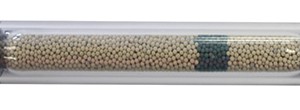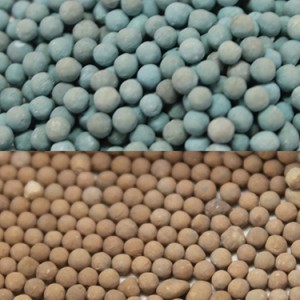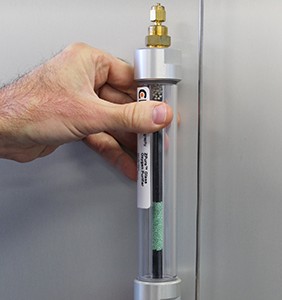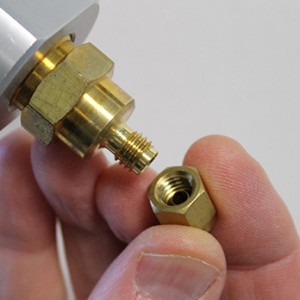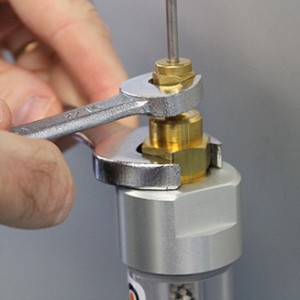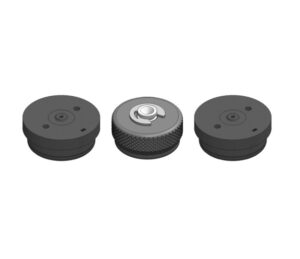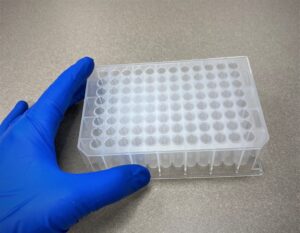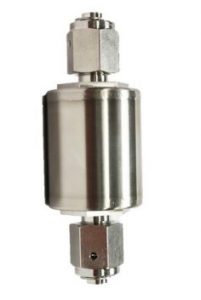Indicating purifiers are popular for obvious reasons – you like to know that your filter is really working. It is possible to get moisture indicators and oxygen indicators that turn color when exposed to the target gas at the 1 ppm level, and remaining high-capacity adsorbent after the indicator in the gas stream can ensure that the output purity is in the ppb range for a period of time after the indicator has expired.
An indicating oxygen filter is shown above. The black material at both ends of the filter is high capacity oxygen adsorbent, and it serves two purposes. (1) It protects the indicator from momentary exposure to the atmosphere when the filter is installed, and (2) as a bonus it provides more capacity than the indicator can provide when the filter is in use.
This similar photo shows a highly sensitive moisture indicator in the course of changing. A lot of moisture indicators in use change in the 4% - 6% relative humidity, because indicators like this are widely used in industry and are cheap, but sensitive moisture indicators for more critical applications are also available.
When plumbing the indicating filter into the gas lines you first have to cut the tubing to fit the filter at the point of installation. Ideally you are mounting the filter in a vertical position to make best use of the adsorbent bed.
You slide the ferrules and nuts onto the tube ends, then pick up the filter, then take the filter nuts and plugs off – no wait – now the nuts have slid off the tubes – get another couple of people to help out. Or is there a better way? Yes – maybe you know this already – but in case you don’t:
Cut the tubes to the right length, using the filter to measure.
Take the nuts off the ends of the filters and remove the plugs.
Put the front and back ferrules loosely into the fittings and capture them with the nut – leaving everything loose but contained.
Slide the filter over the bottom tube until the tube bottoms out in the fitting.
Wiggle the top tube into the top fitting.
Tighten the nuts to about ½ turn past finger tight, making sure to use two wrenches on the fitting/nut so as not to put any torque on the glass tube.
So – what happened to the indicator in the 3 minutes the filter was lying on the bench open to the air? Nothing – the extra adsorbent at both end protected it.
The Advanced Filter System (AFS I or AFS II) is a special case. The indicators, both moisture and oxygen, are very close to the exit of the filter. We recommend purging the lines immediately after the filter cartridge is mounted to the manifold to push any residual air from the filter exit through the gas lines.
For more information, or if you have any additional questions, contact sales@chromres.com or call us at 502-491-6300.

